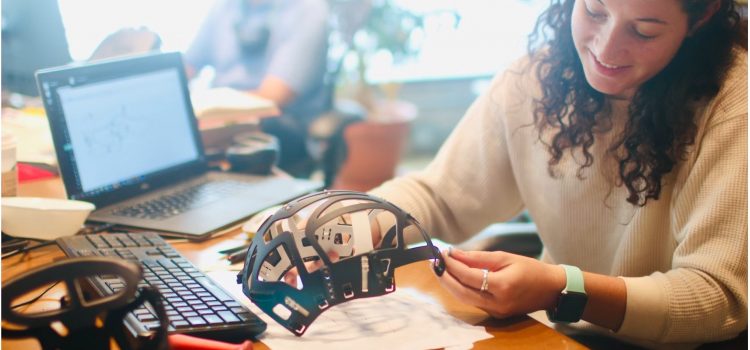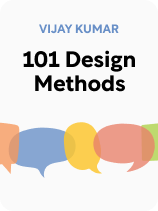

This article is an excerpt from the Shortform book guide to "101 Design Methods" by Vijay Kumar. Shortform has the world's best summaries and analyses of books you should be reading.
Like this article? Sign up for a free trial here.
Why is testing your products important? What are the types of prototypes you should use in the experiment stage?
Prototypes are a popular way of testing out your products before they hit the shelves. This way, you won’t put out faulty products, or ones that won’t do as well against your competitors.
Continue reading to find out how prototype testing works and why 101 Design Methods by Vijay Kumar says you have to do it.
Watch Users in Action
As Kumar explains, you often gain special insights from watching someone do something. These are discoveries that you would never make by just thinking through the process or talking to users about it. So setting up real or simulated scenarios for users to interact with the product is a powerful tool for deepening your understanding of users’ experiences. Prototype testing comes in handy during several of the tasks of innovation:
- Develop a clear idea of what you intend to accomplish
- Define your operating environment
- Understand your stakeholders
- Develop a mental model
- Brainstorm solution elements
- Assemble and evaluate comprehensive solutions
- Plan to implement the solution
During Task 3, when you’re learning about your users, Kumar recommends watching them work with existing products—preferably in the setting where they normally use them, although staging specific scenarios for them to work through at your facility can also be useful if you need to focus on a specific issue.
In Task 5, observing how users interact with a prototype or simulation of one of your solution elements may give you ideas for additional improvements or other solutions. In Task 6, it can help you evaluate solutions, and in Task 7 it lets you validate that your solution will work the way you envisioned it working.
Using Prototypes and Simulations
Kumar discusses different types of prototypes and simulations that you might use, depending on what you want to study. A “behavioral” prototype uses props, actors, and role-playing techniques to simulate how users would interact with a product before any physical prototypes of the product are built. Similarly, he says that just sketching a product or scene showing users interacting with it can help to make the concept more concrete in much the same way that a prototype does.
Meanwhile, a “concept” prototype is a physical prototype that embodies at least one key characteristic of a solution concept so that the concept can be studied. Kumar further divides “concept” prototypes into two categories. “Appearance” prototypes look like the solution concept so you can evaluate the look and feel or user interface of the product. “Performance” prototypes demonstrate how the product would actually work. He notes that some prototypes are a combination of the two.
| Experiment on Users with Minimum Viable Products In The Lean Startup, Eric Ries elaborates on how you should go about observing users and building prototypes. While Kumar’s prototypes are similar to the prototypes Ries recommends building, Ries adds that you should approach testing your product ideas on users scientifically by first forming a hypothesis and then creating a product to test it: Based on what you know (or think you know) about customers needs, demographics, market data, and so forth, come up with a testable hypothesis, like “20% of women over 50 would be interested in [my new product] at a price of $75,” or “A product with [this feature] would reduce the time it takes a mechanic to repair [this automotive problem] by an average of 3 hours.” Then test your hypothesis by launching a “Minimum Viable Product” or MVP and observing how users interact with it. Your MVP is a prototype that provides everything you’ll need to test your hypothesis without any additional features that would add time or expense. One type of MVP Ries describes is a video simulation showing off your product and how it works. If you don’t have a working prototype, use artwork or computer-generated graphics to show how the product will work once you get it working. This correlates to Kumar’s “appearance prototype” because it lets you assess how people would react to the product’s appearance by how they react to the video. Even if you need a fully functional prototype to test your hypothesis, Ries says your MVP could implement it on a very small scale: Instead of rolling out a service to thousands or millions of users right away, start with just one customer and make sure your service meets her needs before you worry about figuring out how to scale up. This would be an MVP version of Kumar’s “performance prototype” since it lets you test the functionality of the product on a minimal scale. You can also build MVPs that appear to be fully functional from the user’s perspective even though behind the scenes you’re performing functions manually that the final product would have to perform automatically. Providing this kind of MVP helps you understand what the product actually needs to do to provide value to customers before you invest in developing technology or infrastructure to meet those needs. This could be considered a version of Kumar’s “behavioral prototype” since it lets you test hypotheses about users’ behavior. |

———End of Preview———
Like what you just read? Read the rest of the world's best book summary and analysis of Vijay Kumar's "101 Design Methods" at Shortform.
Here's what you'll find in our full 101 Design Methods summary:
- Why many companies don’t understand how to manage innovation
- A systematic approach to innovation management
- Specific tools and techniques you can use on innovation projects






